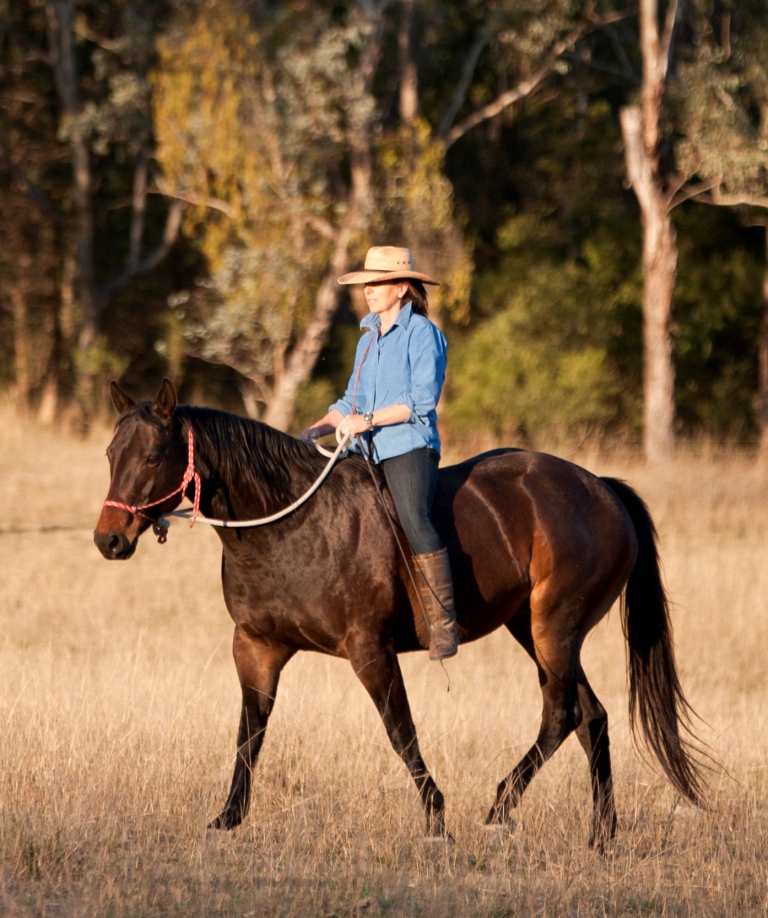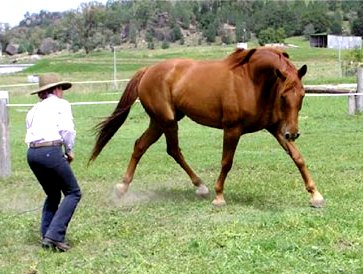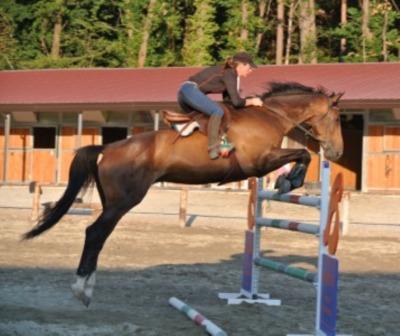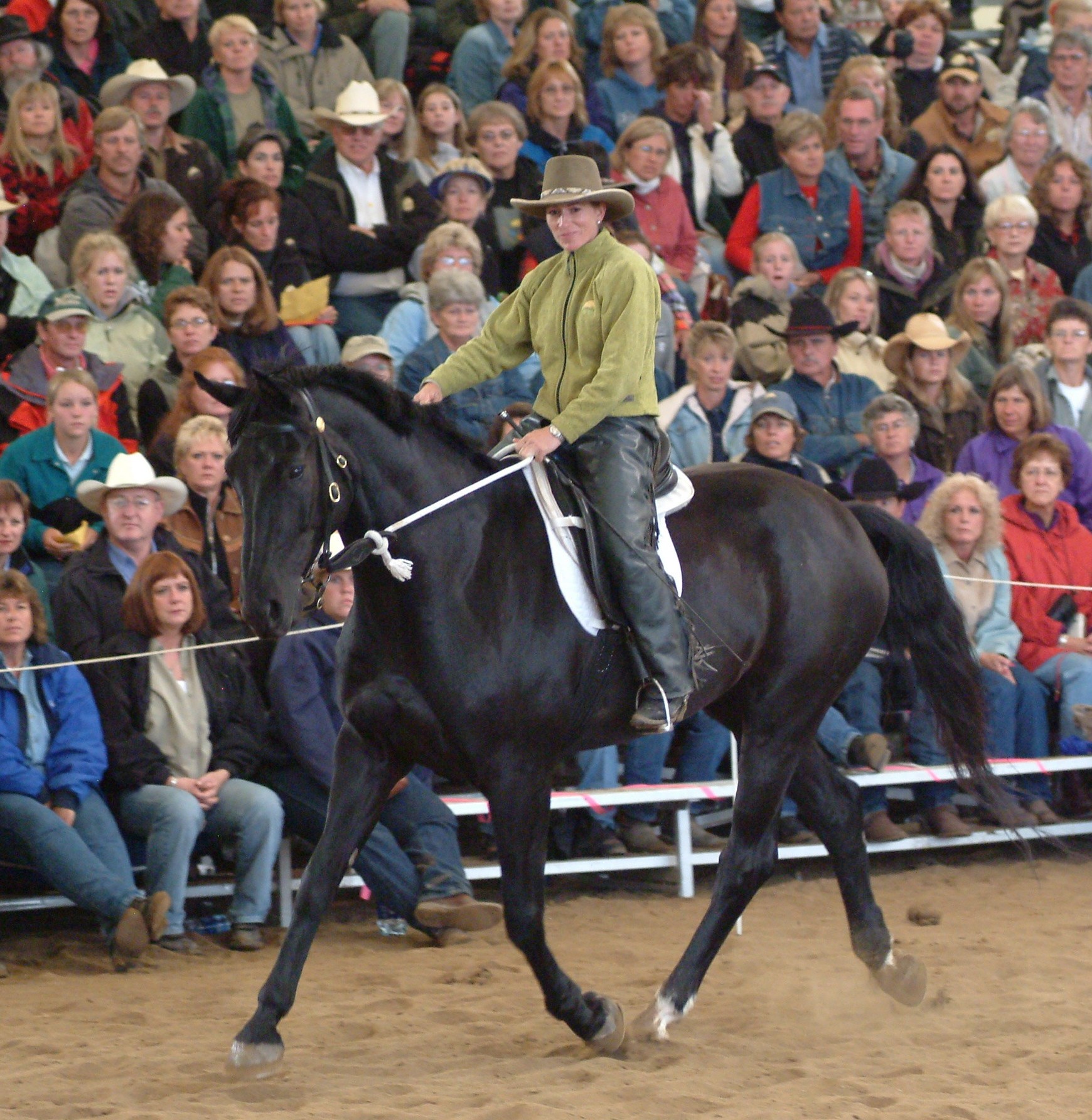Riding with Synchronicity
Why would you want to learn ‘Riding with Synchronicity’?
Because HORSES LIKE IT !!!! Forever on a quest to reach the ultimate possible quality in horsemanship I wanted to find out how horses wanted and needed to be ridden. Having already achieved a lot of success in all sorts of riding and particularly riding high level dressage horses – I felt that the horses weren’t enjoying the experience as much I thought they should and it didn’t feel as good to me as what I thought it should. When the horse is not enjoying the experience of being ridden, then the experience is actually not very enjoyable for the rider either. When a horse is offering, willing and in a state of balance where everything feels effortless and easy, riding feels amazing. It feels good for the horses too. Sadly I think very few people or horses ever really experience how good riding could feel. In fact for many horses and humans riding feels like a huge effort, it’s hard, a struggle, uncomfortable even to the point of painful.
What is Riding with Synchronicity ?
When moving correctly, as nature intended, the horse’s whole body (skeleton, muscles, ligaments and tendons) continually go through a combination of very small movements. The body is not static. It becomes a problem when we fit a static saddle and static rider to this moving body. The saddle needs to be designed to accommodate the moving horse. You can learn more about saddle fitting and design in a saddle fitting lecture, courses or from the book “The Horse’s Voice”. It is a very important factor but right now what we want to focus on is how the rider affects things. The most important areas of the horse that the rider needs awareness of and to synchronize with are the horse’s back, neck and ribcage since those are the areas that are the most directly influenced via the reins and because it is where the rider sits.
The vertebrae of the horse’s neck and back (the spine) continually go through combinations of longitudinal flexion and extension, rotation and lateral flexion. Our bodies must move through those same combinations of movement. If we are locked, even slightly in our spines or any other part of our body we have a big restrictive effect on the horse’s natural and correct biomechanical movement. Conversely, if we move too much and in the wrong direction, we can have an equally adverse effect on the horse.
Most people don’t realize the huge effect a rider can have on a horse. Because the horse is a big strong animal they don’t expect that a rider would affect the horse that much. I certainly didn’t until I started looking deeper, asking questions and exploring more. I discovered that the slightest movements in my body had a very big effect on the horse. For example, having one of my shoulders very slightly dropped down and back caused my horse’s back up (rein back) to be cooked and when I corrected my shoulders my horse backed up straight !!! Until I noticed my dropped shoulder on video, I had just thought it was the horse’s fault. After that I started paying attention to every little thing that I did in my body. I started realizing that by making the smallest movements or adjustments in my body I could influence the horse either positively or negatively.
 I started to notice things such as when I synchronized my ribs with the horse’s ribs the horses lifted their backs and walked with better impulsion and that minute weight shifts in my seat bones had big effects on the horses balance, impulsion, bend, ability to lift their backs and engage their hindquarters. This all took a great degree of body awareness and body control. Making shifts in the seat bones comes through reorganising all the rest of the torso – there are many joints that make up a torso!!!
I started to notice things such as when I synchronized my ribs with the horse’s ribs the horses lifted their backs and walked with better impulsion and that minute weight shifts in my seat bones had big effects on the horses balance, impulsion, bend, ability to lift their backs and engage their hindquarters. This all took a great degree of body awareness and body control. Making shifts in the seat bones comes through reorganising all the rest of the torso – there are many joints that make up a torso!!!
Most people are quite stuck in the torso area of their bodies, which of course includes the spine and the ribcage, and have very little body awareness or control of that part of their body. They usually just think about moving their arms and the legs. Moving from our centre and torso is where all good quality movement comes from for both horse and rider. This is what the term “back mover” in horses relates to – another way of saying it would be that the horse moves from their torso. Developing more body awareness, mobility and control in the torso area and getting movement to originate from our centre (pelvis area) is critical to really great riding.
Just as we are able to influence the horse positively with these small subtle movements in our bodies we can also influence the horse negatively when we are unaware, unbalanced and lacking control of our bodies. I discovered that inadvertently many riders were making it very hard for the horse to use their bodies well or even comfortably. And beyond that, much of the time riders were actually making it physically difficult for horses to do as they were asking for example simple things like turning left or right, engaging their hind quarters and being balanced or “on the bit” not that I like that term, but it is commonly used to describe a horse when people are looking to get a horse into a better state of balance.
When people are doing the wrong thing in their body, they have to revert to using more pressure, whether that be leg or rein pressure or using spurs etc to get things done. This doesn’t lead to the kindest possible way of horsemanship or happy horses, so developing more body awareness, mobility and control is critical and a big part of what Riding with Synchronicity teaches.
All techniques and aids are aimed towards correct biomechanics –
 This means that first and foremost we need to know what correct biomechanics are. It needs to be a true and practical understanding of biomechanics not just a recitation of the “right” words. One aspect is that a horse moving with correct biomechanics will always have a lifted and expanded back, spine and ribcage. So all our aids and techniques must allow and encourage this.
This means that first and foremost we need to know what correct biomechanics are. It needs to be a true and practical understanding of biomechanics not just a recitation of the “right” words. One aspect is that a horse moving with correct biomechanics will always have a lifted and expanded back, spine and ribcage. So all our aids and techniques must allow and encourage this.
If we look at just a few of the commonly taught techniques we can see that they are counterproductive to this. Some instances:-
- Squeezing with your buttocks to go forward (like pushing a swing) – this has a downward effect on the horse’s back which lead to the hindquarters disengaging.
- “Sitting down” to stop your horse – this causes the horse’s back to drop down, the pelvis to disengage and the counterbalance of all that is that the horse needs to lift up the head and neck – then riders wonder why horses put their head and neck up in the air during downward transitions and have to resort to using tie downs or martingales.
- “Bracing your back” in a half halt or into a halt – and what does “bracing your back” actually mean – there are so many ways to brace you back ??? Which way, what part of your back and how ??? Bracing yourself is going to create more brace in the horse anyway, so not such a good technique or explanation of it.
- “Polish the saddle” (scooping the seat down and forward) to sit the canter – this has a downward hollowing effect on the horses back.
- “Hold on the front of the saddle and pull yourself down to learn to sit the trot” – this will have a very downward and damaging effect on the horse’s back.
- Putting all or most of your weight in the stirrups – whether that be in the rise phase of the rising trot or in a forward seat or for any other exercise – this will have the effect of pushing the horses back down.
Riding with Synchronicity looks at every element, aid and cue and makes sure that it is inducive to correct biomechanics. The horses give the feedback as to what they like and need. When the horses is softer, more willing, happier, moves with better impulsion, the rider needs less effort, there is no pushing or driving and the horse is in a better state of balance we are on track.
Riding with Synchronicity means “No Tension”
 To be more specific I mean no “negative tension”. Positive tension gives us poise and structure or form – a look of elegance, as opposed to flopping around like the proverbial sack of potatoes or a rag doll. Negative tension means joints are locked. When the skeleton is held with poise, structure and form, no joints will be locked.
To be more specific I mean no “negative tension”. Positive tension gives us poise and structure or form – a look of elegance, as opposed to flopping around like the proverbial sack of potatoes or a rag doll. Negative tension means joints are locked. When the skeleton is held with poise, structure and form, no joints will be locked.
All elite athletes are moving in the most effortless way possible. That is with the least amount of tension (or it could be described as no negative or excess tension) and as much relaxation as possible. This is how both horse and rider need to be operating. It means learning to move in a completely different way for most people because it is not the default pattern for most people. All tension starts in the mind and emotions – even if it is the subconscious mind, so mental and emotional awareness and control are a big component of Riding with Synchronicity and therefore a big component of the teaching.
Riding with Synchronicity is about “Not forcing things”.
 When the horse is not easily finding that optimal state of balance and correct movement or doing as we would like, we need to ask questions rather than pressuring more or pushing more.
When the horse is not easily finding that optimal state of balance and correct movement or doing as we would like, we need to ask questions rather than pressuring more or pushing more.
Is the rider blocking the horse?
Is the saddle blocking the horse?
Does the horse have physical and or emotional issues that need to be addressed?
Is the horse being asked to do something that it is not physically strong enough or capable of doing with its current state of fitness or health?
Riding with Synchronicity is the kindest way I know to ride horses. It comes from a place of love, compassion and understanding and having a deep connection with the horse. Hence the precursor to Riding with Synchronicity is Connecting with Horses.

